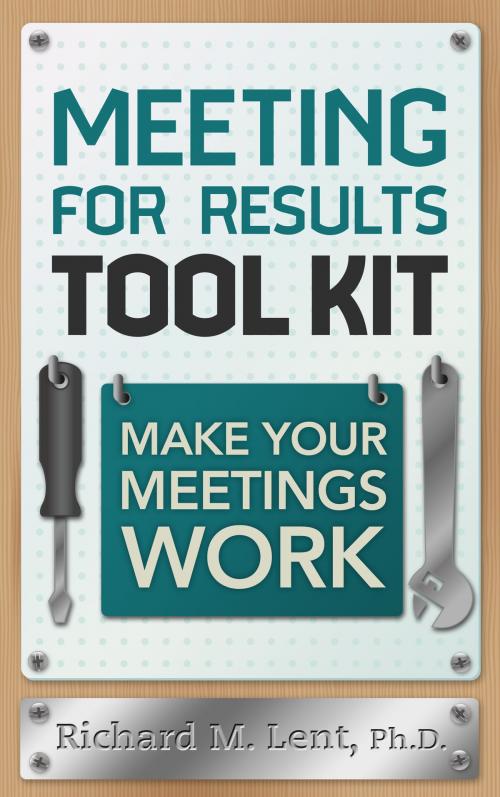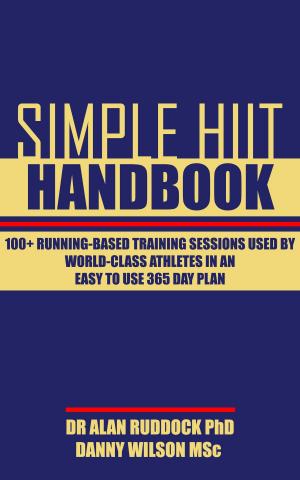Meeting for Results Tool Kit
Make Your Meetings Work
Business & Finance, Management & Leadership, Management| Author: | Richard M. Lent | ISBN: | 9781623097837 |
| Publisher: | BookBaby | Publication: | September 20, 2012 |
| Imprint: | Language: | English |
| Author: | Richard M. Lent |
| ISBN: | 9781623097837 |
| Publisher: | BookBaby |
| Publication: | September 20, 2012 |
| Imprint: | |
| Language: | English |
A Different Approach to More Effective Meetings Meeting for Results Tool Kit provides a different approach to running effective meetings because it: • Is written for leaders whose focus is on holding meetings to get work done and not on facilitation. • Provides 12 clear choices and 31 supporting tools for planning, conducting and achieving results from meetings. • Helps structure a naturally effective meeting instead of relying on rules or norms for guiding meeting behavior. • Serves as a reference tool or job aid in planning and running a meeting. • Helps leaders run effective board meetings, team meetings or staff meetings—in a business, non-profit, or community setting. What Makes this Different Approach Possible? Much current advice on meetings is based on practices and assumptions about how to control behavior. We are asked to maintain order (e.g., “Robert’s Rules”), or to behave a certain way (e.g., “meeting norms”). However, such guidance is hard to follow, particularly when you want productive engagement in difficult discussions. Recently, various practitioners have developed ways to hold effective meetings with 50, 100 or more people. In such large groups, they could not “facilitate” behaviors of individual participants. Instead, they developed various structures that made it easier for people to talk together productively. Such structures enabled participants to “self-manage” the work, let everyone be heard, arrive at effective decisions and do so all within a set amount of time. Thousands of successful large group meetings have employed such structural approaches. Based on his experience with running large group meetings, Rick Lent began to adopt selected structural techniques and apply them to “regular” everyday meetings. In particular, he focused on techniques that could be used by leaders anywhere without a facilitator or extensive training. This Tool Kit distills what he has learned into 12 choices and 31 supporting tools that can help leaders run all kinds of meetings every day. Here are just some of the meeting challenges leaders have brought to Rick: • Jane struggled to keep a team of 12 people focused and engaged in the work of the meeting. • Brian’s meetings were contentious, as several members always came down on different sides of an issue. • John’s meetings seemed to produce few lasting agreements. Decisions reached in one meeting got revisited again later. • Susan’s meetings ran overtime and still didn’t get to everything on the agenda. These and similar challenges can all be addressed by working with choices and tools in this book. For example, Jane’s challenge with a team of 12 people benefited from making specific choices in planning the meeting given the size of her group. She used a tool Rick calls the Principle of 8 which suggests that her group was too large to engage everyone in an effective whole group discussion at all times. Instead, she could employ various tools to make sure participants had opportunities to speak and be heard—while still using time efficiently. Among several options, she used the tools called 1-2-All and Go-Around to enable all to speak to the topic, in small groups as well as with the whole team and her meetings became much more successful. As a board president told Rick after adopting just a few of the ideas in this book, “Your suggestions, were very helpful and proved to be most effective with the board members. The attendees felt included throughout the meeting and left energized. I kind of marvel at how well the discussion went and so easily. The approach was really a “no-brainer,’ yet we’d never done anything like it before.” Rick has spent 25 years identifying effective meeting structures and applying them in his work facilitating large group meetings in businesses, non-profit organizations and communities. The Meeting for Results Tool Kit distills what he has learned into an easily applied set of choices and tools to help leaders get better results from their own meetings.
A Different Approach to More Effective Meetings Meeting for Results Tool Kit provides a different approach to running effective meetings because it: • Is written for leaders whose focus is on holding meetings to get work done and not on facilitation. • Provides 12 clear choices and 31 supporting tools for planning, conducting and achieving results from meetings. • Helps structure a naturally effective meeting instead of relying on rules or norms for guiding meeting behavior. • Serves as a reference tool or job aid in planning and running a meeting. • Helps leaders run effective board meetings, team meetings or staff meetings—in a business, non-profit, or community setting. What Makes this Different Approach Possible? Much current advice on meetings is based on practices and assumptions about how to control behavior. We are asked to maintain order (e.g., “Robert’s Rules”), or to behave a certain way (e.g., “meeting norms”). However, such guidance is hard to follow, particularly when you want productive engagement in difficult discussions. Recently, various practitioners have developed ways to hold effective meetings with 50, 100 or more people. In such large groups, they could not “facilitate” behaviors of individual participants. Instead, they developed various structures that made it easier for people to talk together productively. Such structures enabled participants to “self-manage” the work, let everyone be heard, arrive at effective decisions and do so all within a set amount of time. Thousands of successful large group meetings have employed such structural approaches. Based on his experience with running large group meetings, Rick Lent began to adopt selected structural techniques and apply them to “regular” everyday meetings. In particular, he focused on techniques that could be used by leaders anywhere without a facilitator or extensive training. This Tool Kit distills what he has learned into 12 choices and 31 supporting tools that can help leaders run all kinds of meetings every day. Here are just some of the meeting challenges leaders have brought to Rick: • Jane struggled to keep a team of 12 people focused and engaged in the work of the meeting. • Brian’s meetings were contentious, as several members always came down on different sides of an issue. • John’s meetings seemed to produce few lasting agreements. Decisions reached in one meeting got revisited again later. • Susan’s meetings ran overtime and still didn’t get to everything on the agenda. These and similar challenges can all be addressed by working with choices and tools in this book. For example, Jane’s challenge with a team of 12 people benefited from making specific choices in planning the meeting given the size of her group. She used a tool Rick calls the Principle of 8 which suggests that her group was too large to engage everyone in an effective whole group discussion at all times. Instead, she could employ various tools to make sure participants had opportunities to speak and be heard—while still using time efficiently. Among several options, she used the tools called 1-2-All and Go-Around to enable all to speak to the topic, in small groups as well as with the whole team and her meetings became much more successful. As a board president told Rick after adopting just a few of the ideas in this book, “Your suggestions, were very helpful and proved to be most effective with the board members. The attendees felt included throughout the meeting and left energized. I kind of marvel at how well the discussion went and so easily. The approach was really a “no-brainer,’ yet we’d never done anything like it before.” Rick has spent 25 years identifying effective meeting structures and applying them in his work facilitating large group meetings in businesses, non-profit organizations and communities. The Meeting for Results Tool Kit distills what he has learned into an easily applied set of choices and tools to help leaders get better results from their own meetings.















